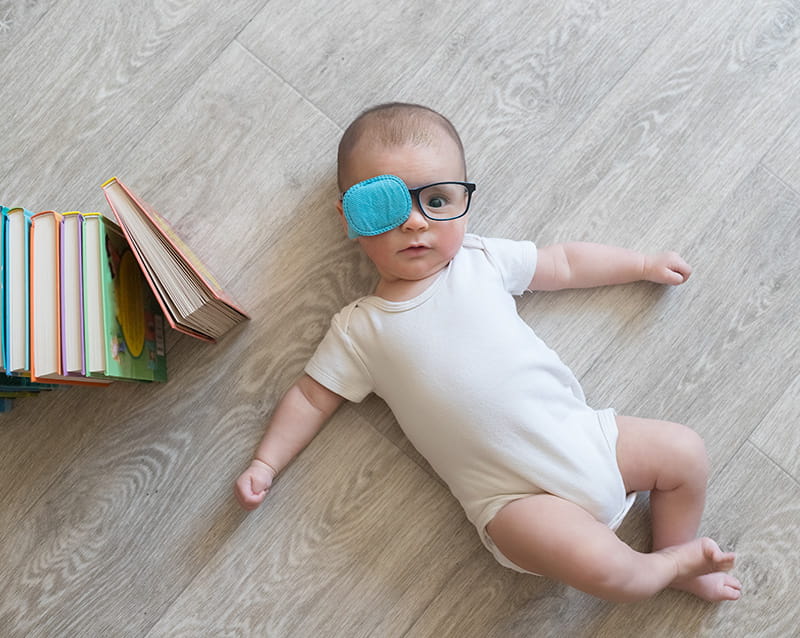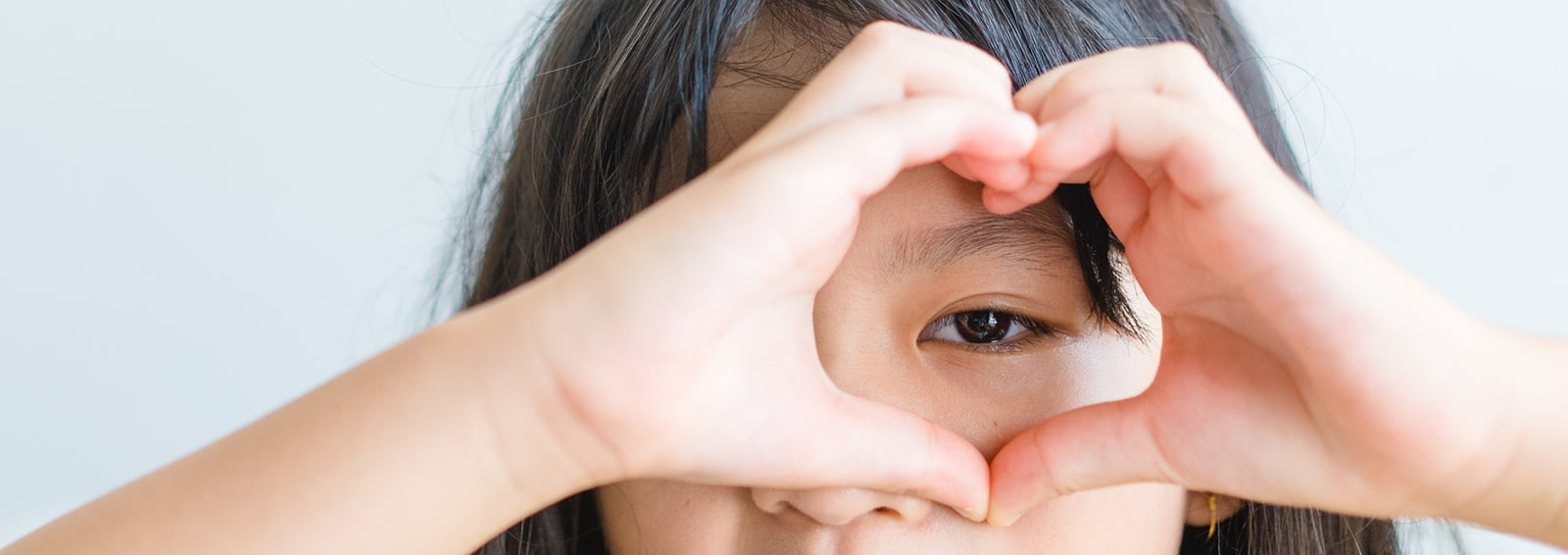Amblyopia (Lazy Eye)
If you are seeking pediatric eye care or treatment for amblyopia in the Metro Detroit area, we can help. The team at Fraser Eye Care Center, including our experienced pediatric ophthalmologist Dr. Lucas Bonafede, has the skill and resources to diagnose and treat amblyopia and other childhood eye conditions.
What is Amblyopia?
Amblyopia is an eye condition that affects up to 4% of children under the age of 7.1 Amblyopia is characterized by abnormal vision development in one or both eyes during childhood.This condition is sometimes called “lazy eye”. However, it is important to note that amblyopia is caused by developmental factors beyond the patient’s control. Amblyopia can be caused by underlying problems such as:
- Blurred vision from uncorrected nearsightedness, farsightedness, or astigmatism, especially if there is a difference between eyes
- Eye misalignment such as esotropia (eyes that are crossed inwards), exotropia (eyes that are positioned away from each other), or hypertropia (one eye is positioned upwards relative to the other)
- The blocking of light from entering the eye from conditions such as cataracts or a droopy eyelid
Amblyopia is the leading cause of vision loss among children.2 It is critical to identify and treat amblyopia as early as possible in order to resume visual development and improve the vision.
Amblyopia Symptoms
Children do not always recognize or express vision problems, so it is important to have regular pediatric eye screenings. Early detection is key in treating amblyopia. Symptoms to watch for include:
- Poor depth perception
- Squinting, head tilting, or covering one eye to see
- Complaints of blurred vision or double vision
- One eye turning inward or outward
- Difficulty seeing the board in school
What Causes Amblyopia?
The exact cause of amblyopia is unknown, but it is understood that this condition is generally caused by an interference in the brain to eye connection during development. There are certain risk factors that can make a child more likely to develop amblyopia.
Amblyopia Risk Factors
- Premature birth
- Smaller than average size at birth
- Developmental disabilities
- Family history of amblyopia or other childhood eye conditions
Types of Amblyopia
Amblyopia is classified into three different types:
- Strabismic amblyopia is caused by an imbalance in the muscles that control eye movement.
- Refractive amblyopia occurs when each eye has a different level of vision because of differing refractive errors (different levels of farsightedness or nearsightedness in each eye).
- Deprivation amblyopia is the most severe type of amblyopia and occurs when something blocks normal vision in one eye, commonly caused by a cataract.

Treatment of Amblyopia
There are several different treatment options for amblyopia and our pediatric ophthalmologist will recommend a treatment plan that is best for your child based on the type and severity of their amblyopia. Early detection and treatment is important in order to restore vision—best results are seen when treatment begins before the age of 7, but older children can also gain vision improvement.3
Treatment options include:
- Eye Patch: Your eye doctor may recommend wearing an eye patch over the stronger eye in order to give the eye with amblyopia a chance to strengthen itself. Your eye doctor can also discuss strategies for helping young children tolerate the eye patch.
- Glasses: Certain cases of refractive amblyopia can be corrected with eyeglasses.
- Eyedrops: Children who are unable to wear an eye patch may be treated with an eye drop called atropine (Isopto Atropine) that works by blurring the “good eye” to allow the eye with amblyopia to get stronger.
- Surgery: Children with deprivation amblyopia may require surgery to correct the underlying problem, such as a cataract. Surgery may also be recommended to repair the underlying eye muscles in severe cases of amblyopia. Following surgery, the child may require continued treatment with patching, glasses, or eyedrops.
Contact Us
Early detection and treatment of pediatric eye conditions is key in caring for your child’s vision and eye health. Contact us with any questions or to schedule your appointment.
Ready to Schedule an Appointment?
Book Online Sources
Sources
1 West S, Williams C. Amblyopia in children (aged 7 years or less). BMJ Clin Evid. 2016;2016:0709. Published 2016 Jan 5.
2 National Eye Institute. Amblyopia (lazy eye) Available: https://www.nei.nih.gov/learn-about-eye-health/eye-conditions-and-diseases/amblyopia-lazy-eye Accessed August 18, 2021
3 Mayo Clinic. Lazy Eye (amblyopia). Available: https://www.mayoclinic.org/diseases-conditions/lazy-eye/diagnosis-treatment/drc-20352396 Accessed August 18, 2021.
Dr. Lucas Bonafede has either authored or reviewed and approved this content.

